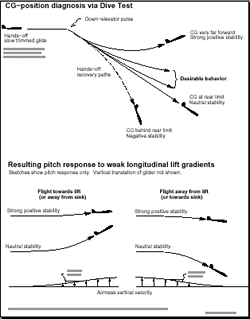Contrary to popular myth, airfoils do not have “ideal” CG locations – airplanes do. The CG location should mainly depend on the wing planform, the tail arm, and the tail size. The wing airfoil is secondary.
Another myth is that the glider’s performance (L/D, sink rate, penetration, whatever) is strongly affected by CG position. It just ain’t so. You might see the L/D change by only a few percent after a drastic CG change, assuming the elevator trim and/or decalage are readjusted correctly. The big effect is on handling and pitch behavior, which is far more important than a few percent in sink rate when flying in active air.
Where you want the CG to be should depend on personal preference and flying style. Some people fly with the CG well forward. Others seem to fly with the CG as far back as is tolerable.
To decide what’s best for you, a good approach is to first identify the aftmost neutrally-stable CG location by dive test or whatever. Then move the CG ahead of that point by gradual amounts, until the glider behaves as you like.

So what to watch for? As a guide, here are some behavior pros and cons at the two extremes of the CG range. The idea is to strike a nice balance.
CG at the aft limit… glider continues in a straight line or tucks in very slightly when put into a dive from a slow glide.
Pro: Glider will strongly pitch up and slow down, or “balloon”, when flying directly into the slightest lift, and dive down and speed up when flying directly out of lift. Obviously this behavior is a nice weak lift indicator, especially when very far away or directly overhead where you can’t easily tell if the glider is going up or down. This type of “lift ahead” or “lift behind” indication via pitch change and airspeed is a good addition to the usual “lift to the side” indication via banking.
Con: Glider will not hold pitch trim, but will tend to stall or dive at the slightest disturbance. Lots of work is needed to constantly twiddle with the elevator. In turbulent thermals you have to fly faster than ideal to avoid occasional stalls.
CG well forward of aft CG limit… glider pulls out very quickly when put into a dive.
Pro: Glider will solidly hold pitch trim and airspeed, even in turbulence. When in a thermal, this allows flying nice and slow at minimum sink, with little risk of stalling from an upset.
Con: Glider has little tendency to pitch up and slow down when flying straight into lift, but just plows steadily along. It will still directly rise in lift while staying level, but again this is not as obvious as a pitch change when directly overhead or very high up. The “lift to the side” indication via banking is unaffected, and should not enter into the CG position decision.